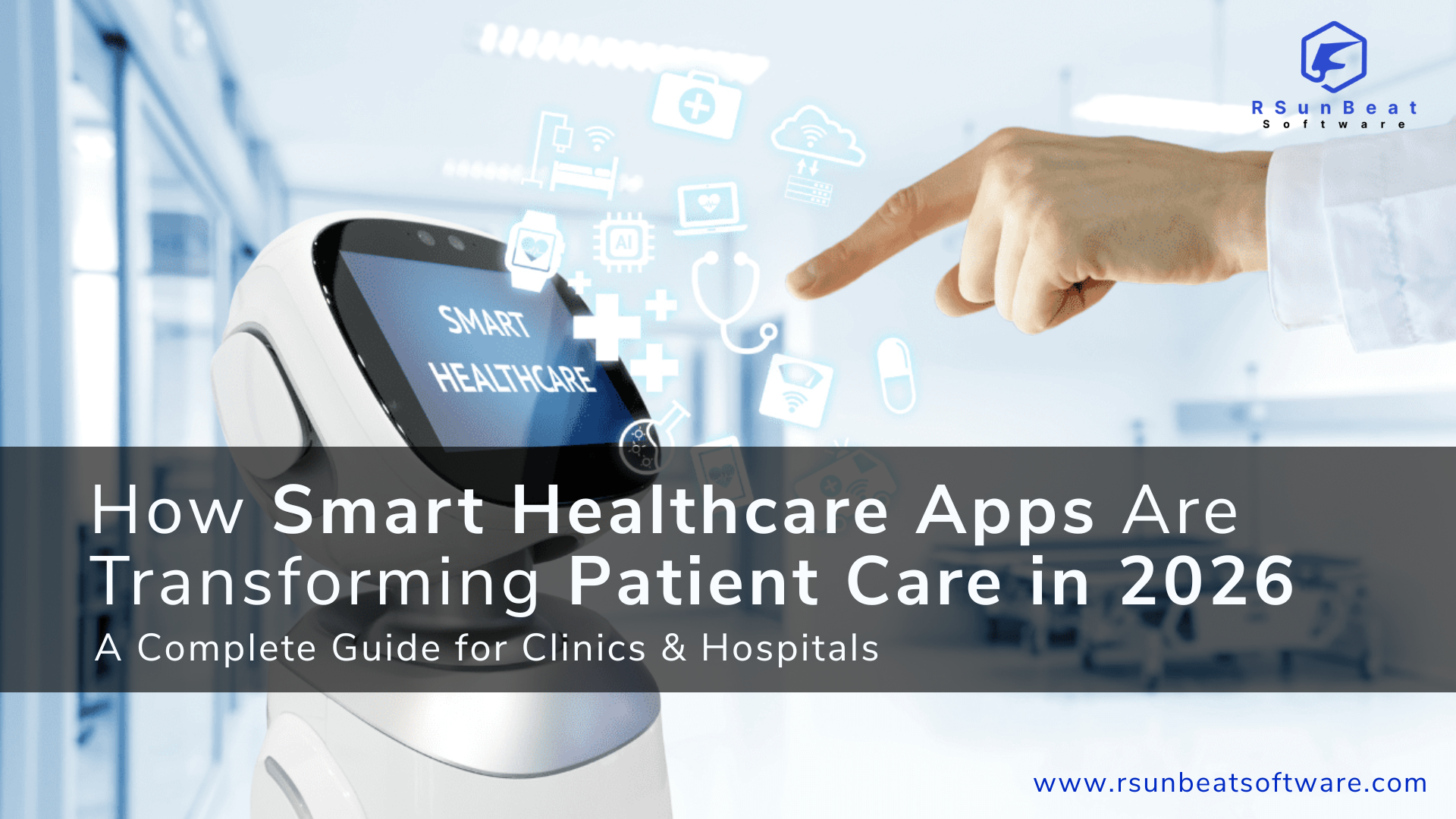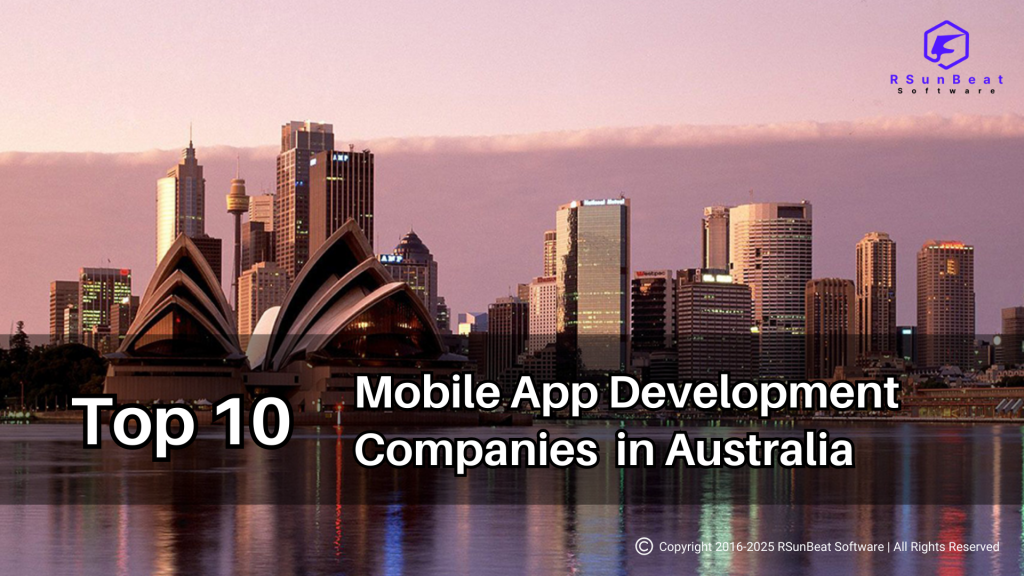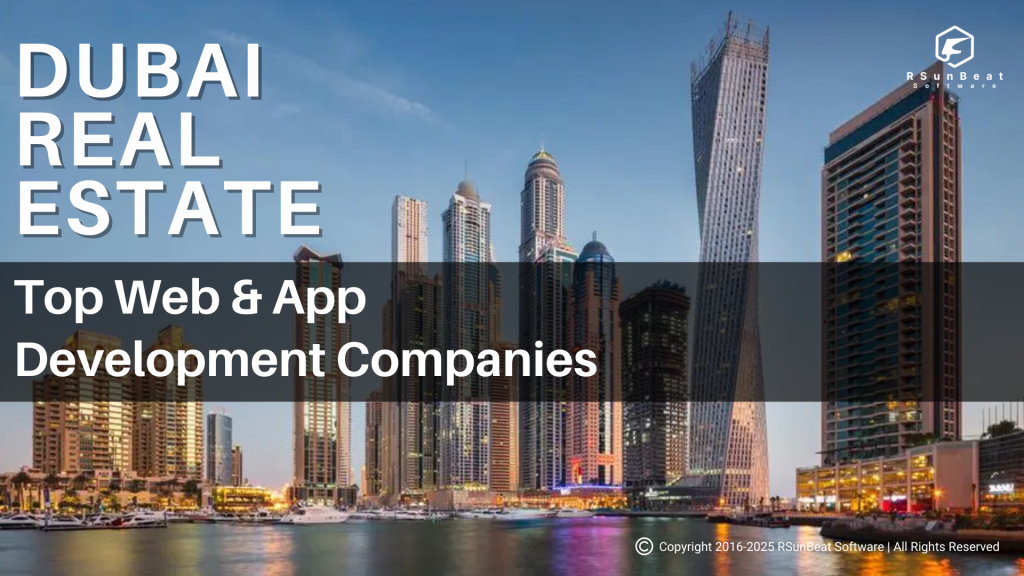
How Smart Healthcare Apps Are Transforming Patient Care in 2026: A Complete Guide for Clinics & Hospitals
The New Era of Digital-First Patient Care
By 2026, digital health is no longer optional — it’s a clinical and operational necessity.
According to a 2025 HIMSS report, over 80% of hospitals worldwide use mobile health apps or remote patient monitoring (RPM) tools as part of standard care. From AI triage bots to telehealth platforms and smart medication apps, healthcare organizations are rapidly adopting digital tools to improve outcomes, boost efficiency, and enhance patient engagement.
But how do you build a smart healthcare app that’s clinically reliable, interoperable, and compliant with strict health regulations across markets like the USA, UK, Canada, Germany, UAE, India, and Australia?
Let’s break down what “smart” means in healthcare app development — and how clinics and hospitals can use it to transform patient care in 2026.
What “Smart Healthcare App” Means in 2026
Smart healthcare apps are more than appointment booking tools. They are connected digital ecosystems that combine real-time patient data, AI-driven insights, and interoperability with hospital systems.
Key Categories of Smart Healthcare Apps
Patient Portals: Self-service access to records, test results, and payments.
Telehealth Apps: Real-time video consultations, scheduling, and e-prescriptions.
Remote Patient Monitoring (RPM): Continuous tracking of vitals via wearable devices.
Chronic Care Management: Tools for diabetes, hypertension, and cardiac care adherence.
Clinical Decision Support (CDS): AI models predicting risks like sepsis or readmission.
Care Coordination Platforms: Multi-provider collaboration for integrated care.
Patient Engagement Apps: Personalized education, reminders, and feedback loops.
Core Capabilities of a Smart Healthcare App
✅ Interoperability with EHR systems (FHIR, HL7)
✅ Real-time data collection & analytics
✅ Device integration (Bluetooth/BLE, IoT hubs)
✅ Secure authentication (OAuth2, OpenID Connect)
✅ AI/ML-driven recommendations
✅ Cloud-based scalability and multilingual UX
Clinical & Operational Benefits
Modern healthcare apps deliver measurable results across patient outcomes, efficiency, and revenue cycles.
1️⃣ Improved Patient Outcomes
Continuous monitoring enables early intervention for chronic diseases.
Medication reminders and adherence tracking reduce complications.
AI-driven alerts support clinicians with predictive analytics.
📈 Example: A chronic care app integrated with wearable sensors reduced hospital readmissions by 27% in a 2024 pilot study (Source: NIH Digital Health Report).
2️⃣ Operational Efficiency
Automated scheduling reduces no-shows by up to 35%.
Staff can manage virtual consultations and triage queues more efficiently.
Clinicians access consolidated data, cutting admin time by hours weekly.
3️⃣ Financial Impact
RPM reimbursement codes in the USA (CPT 99453–99458) create new revenue streams.
Optimized care coordination reduces per-patient costs.
Hospitals improve throughput and capacity planning with AI analytics.
4️⃣ Staff Satisfaction
Streamlined workflows, fewer manual data entries, and reduced burnout result in happier care teams.
Key Features to Prioritize in 2026
Building a “smart” app requires blending clinical, technical, and UX precision.
Essential Features:
Secure Authentication: Multi-factor, OAuth2 / OpenID Connect, SSO via hospital identity provider.
Bi-Directional EHR Integration: Using FHIR APIs and HL7 v2 for legacy systems.
Telehealth Functionality: HD video, in-session note-taking, real-time document exchange.
Remote Vitals Monitoring: Integration with IoT devices (BP, SpO2, glucose meters).
AI-Assisted Triage & Risk Scoring: Chatbots or ML models for early warning.
Medication Adherence & E-Prescription: Automated reminders, refill requests.
Multilingual UX: WCAG-compliant accessibility for global reach.
Analytics Dashboards: Clinical insights, population health, patient engagement scores.
💡 Pro Tip: Use modular APIs and microservices so these features can evolve without breaking compliance or performance.
Technical Architecture & Interoperability
A well-designed architecture ensures secure, scalable, and interoperable operations.
Recommended Architecture Stack
Frontend: React Native / Flutter
Backend: Node.js / .NET Core / Java (microservices)
Integration Layer: FHIR Gateway, HL7 Interface Engine (Mirth Connect / Redox)
Database: MongoDB / PostgreSQL with encryption
Infrastructure: Kubernetes + AWS / Azure Healthcare Cloud
Messaging: Kafka or RabbitMQ for event-driven updates
Data Flow Overview
Device Cloud / Patient App → API Gateway → EHR (FHIR Resource Mapping)
Clinician Dashboard ← Analytics Engine (AI Risk Scoring, Alerts)
Secure Storage → Encrypted Audit Logs + Role-Based Access Control
Interoperability Standards
FHIR R4 / R5 (data resources & APIs)
DICOM (medical imaging)
HL7 v2 (legacy hospital systems)
SMART on FHIR (OAuth2 for app authorization)
🔐 Security Layers: TLS 1.3, AES-256 encryption, RBAC, and ISO 27001 / SOC 2 compliance.
Regulatory, Privacy & Compliance
Healthcare data governance varies globally. Always align with local regulations.
| Region | Key Regulations & Standards |
|---|---|
| USA | HIPAA, HITECH, ONC Cures Act, FDA SaMD (for clinical apps) |
| UK | UK GDPR, NHS Digital Toolkit, DTAC |
| EU / Germany | GDPR, BfArM Digital Health Applications (DiGA) |
| Canada | PIPEDA + provincial acts (PHIPA, HIA) |
| UAE / Middle East | DHA Health Data Law, ADHICS standards |
| India | DISHA (proposed), NDHM / ABDM APIs |
| Australia | My Health Record Act, Privacy Act 1988 |
| Singapore / SE Asia | PDPA, MOH telehealth guidelines |
💡 If the app provides diagnostic or decision support functionality, consider SaMD (Software as a Medical Device) certification and clinical validation.
Case Studies: Real-World Impact
Clinic Case – Chronic Care Success
A diabetes clinic in Toronto launched an RPM app integrated with Bluetooth glucose monitors. Within six months:
HbA1c levels dropped by 0.8%
ER visits reduced by 18%
Staff reported 30% less time spent on manual data entry.
Hospital Case – Post-Discharge Monitoring
A regional hospital in Berlin used a telehealth + RPM system to track post-surgical patients.
Results after 90 days:
22% reduction in readmissions
Improved follow-up adherence
Better patient satisfaction scores (from 72 → 91 NPS).
Budgeting & Engagement Models
Development Cost Benchmarks
| Scale | Estimated Cost Range (USD) |
|---|---|
| Pilot / MVP | $30,000 – $75,000 |
| Full Production App | $150,000 – $300,000 |
| Enterprise / Multi-Hospital | $500,000+ |
Engagement Models
Fixed Price: For MVP builds or prototypes.
Time & Material: For ongoing integrations and scaling.
Hybrid / Subscription: Continuous support + device or user-based pricing.
Choosing the Right Vendor — RFP Checklist
When evaluating healthcare app developers, look for:
✅ Proven healthcare domain experience
✅ FHIR / HL7 integration capability
✅ HIPAA & GDPR compliance certification
✅ Scalable DevOps pipelines (CI/CD)
✅ Post-launch support and SLA guarantees
✅ Clinical validation experience
💬 Ask to review similar telehealth or RPM case studies and security documentation.
Future Trends to Watch (2026 & Beyond)
🚀 AI-Driven Triage & Decision Support: Generative AI assisting clinicians.
💓 Edge Computing for Wearables: Local processing for faster analytics.
🧬 Digital Twin Models: Simulated patient profiles for personalized medicine.
🔐 Decentralized Identity (DID): Blockchain for secure patient identity management.
💳 Value-Based Payment Integration: Linking patient outcomes directly to reimbursement.
The Future of Patient Care Is Smart, Secure, and Connected
Smart healthcare apps are redefining how care is delivered—shifting from reactive to proactive, from hospital-centered to patient-centric.
Clinics and hospitals that invest in secure, AI-powered, interoperable solutions today will lead the healthcare transformation of tomorrow.
💬 Schedule a free technology audit—we’ll help you design compliant, scalable, patient-first apps for 2026 and beyond.
Testimonials ~
What Our Clients
Are Saying
Your trust drives our passion. Here’s how we’ve helped businesses like yours thrive with tailored solutions and unmatched support.

Hussein Termos
CEO
“RSunBeat Software is a top-tier web development company for the real estate industry. They delivered a user-friendly, customized platform that met our needs perfectly. Their innovative solutions, on-time delivery, and excellent support made the process seamless. Highly recommended for exceptional development services!”

James Carten
Founder & CEO
“Before working with RSunBeat Software, our real estate business faced issues with unreliable mobile apps, poor user experiences, and missed deadlines. RSunBeat delivered a seamless, high-performing app with excellent functionality, intuitive design, and timely execution, transforming our operations. Their expertise and dedication make them a trusted partner.”

Darla Shewmaker
VP of Marketing
“RSunBeat Software developed a great, user-friendly mobile app that exceeded our expectations. The team was extremely professional, kept us updated throughout the process and completed the work on time. Their expertise and dedication made the whole project seamless. We highly recommend RSunBeat for their great work and reliability!”

Nicholas Toh
Project Manager
“RSunBeat Software delivered an amazing web and app development experience. Their team was highly professional, detail-oriented, and dedicated to bringing our vision to life. The final product was seamless, user-friendly, and exceeded our expectations. We highly recommend them for top-notch development services!”
Our Technology Experts
Are Change Catalysts
Mail to Our Sales Department
info@rsunbeatsoftware.com
Our Skype Id
Rsunbeat Software


